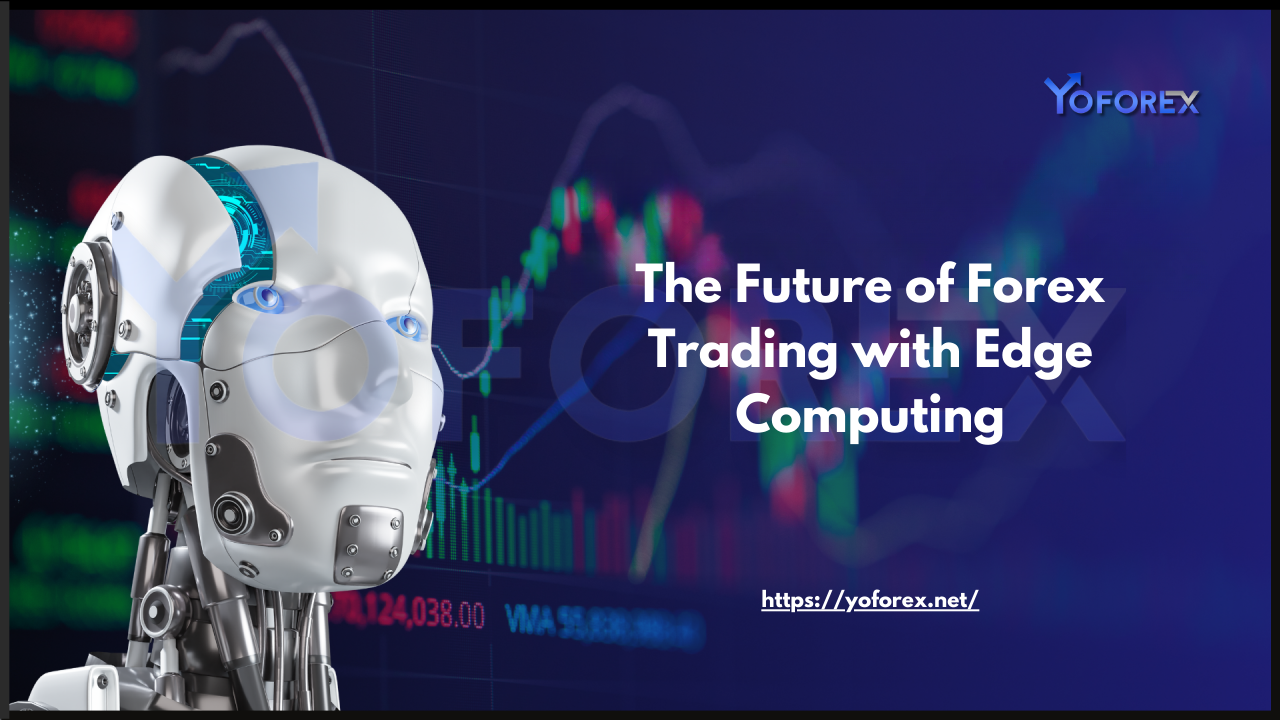The forex market, the largest and most liquid financial market in the world is undergoing a transformative shift driven by technological advancements. Among these, edge computing stands out as a game-changer, promising to revolutionize how traders interact with the market. By bringing computation and data storage closer to the source of data generation, edge computing addresses critical challenges in forex trading, such as latency, scalability, and real-time decision-making. This blog explores how edge computing is shaping the future of forex trading, its benefits, challenges, and the potential it holds for traders and institutions alike.
What is Edge Computing?
Edge computing is a distributed computing paradigm that processes data near the edge of the network, where data is generated, rather than relying on centralized cloud servers. This approach reduces latency, enhances speed, and improves reliability, making it ideal for applications requiring real-time processing, such as forex trading. In the context of forex, edge computing enables traders to execute trades faster, analyze market data in real-time, and respond to market changes with unprecedented agility.
The Role of Edge Computing in Forex Trading
1. Reducing Latency for High-Frequency Trading
In forex trading, especially high-frequency trading (HFT), every millisecond counts. Edge computing minimizes latency by processing data closer to the trading platforms and broker servers. For instance, ultra-low-latency networks powered by edge computing can reduce delays to under 1 millisecond, enabling traders to capitalize on fleeting market opportunities.
2. Enhancing Automated Trading Systems
Automated trading systems (ATS) rely on real-time data analysis and rapid execution. Edge computing ensures these systems operate seamlessly by providing the computational power needed to process vast amounts of data locally. This eliminates the delays associated with sending data to centralized servers, allowing ATS to execute trades with precision and speed.
3. Improving Scalability and Reliability
The forex market operates 24/5, generating massive amounts of data. Edge computing’s decentralized architecture allows for scalable solutions that can handle increasing data volumes without compromising performance. Additionally, its resilience to network disruptions ensures uninterrupted trading, even during periods of high market volatility.

Benefits of Edge Computing in Forex Trading
1. Faster Trade Execution
By reducing latency, edge computing enables traders to execute trades at optimal prices, minimizing slippage and maximizing profits. This is particularly beneficial for scalpers and algorithmic traders who rely on split-second decisions.
2. Real-Time Market Analysis
Edge computing allows traders to analyze market data in real time, providing actionable insights into price movements, trends, and sentiment. This capability is enhanced by AI and machine learning algorithms that can process and interpret data locally, offering traders a competitive edge.
3. Enhanced Security
Edge computing enhances security by decentralizing data processing and storage. This reduces the risk of cyberattacks targeting centralized servers and ensures that sensitive trading data remains protected.
4. Cost Efficiency
By reducing the need for expensive cloud infrastructure and minimizing data transfer costs, edge computing offers a cost-effective solution for traders and institutions. This is especially advantageous for retail traders with limited resources.
Challenges and Limitations
1. Infrastructure Costs
While edge computing reduces long-term operational costs, the initial investment in infrastructure, such as edge servers and low-latency networks, can be significant. This may pose a barrier for smaller traders and institutions.
2. Data Management
Managing data across distributed edge nodes requires robust protocols to ensure consistency and accuracy. Traders must also address challenges related to data synchronization and storage.
3. Regulatory Compliance
The decentralized nature of edge computing may complicate regulatory compliance, particularly in regions with strict data privacy laws. Traders must ensure that their edge computing solutions adhere to local and international regulations.
The Future of Edge Computing in Forex Trading
1. Integration with AI and Machine Learning
The combination of edge computing and AI will enable more sophisticated trading strategies. AI algorithms running on edge devices can analyze market data in real-time, adapt to changing conditions, and optimize trading strategies dynamically.
2. Expansion of Decentralized Trading Platforms
Blockchain technology, combined with edge computing, will facilitate the development of decentralized forex trading platforms. These platforms will offer greater transparency, security, and efficiency, attracting a wider range of participants.
3. Quantum Computing and Edge Networks
As quantum computing matures, its integration with edge networks could revolutionize forex trading. Quantum-powered edge devices could process complex calculations at unprecedented speeds, enabling traders to predict market movements with greater accuracy.
4. Sustainability and Green Computing
The forex industry is increasingly focusing on sustainability. Edge computing’s energy-efficient infrastructure aligns with this trend, reducing the carbon footprint of trading operations and promoting environmentally responsible practices.
Conclusion
Edge computing is poised to redefine the future of forex trading by addressing critical challenges such as latency, scalability, and real-time decision-making. Its integration with AI, blockchain, and quantum computing will unlock new possibilities, enabling traders to navigate the dynamic forex market with greater efficiency and precision. While challenges remain, the potential benefits of edge computing far outweigh its limitations, making it a cornerstone of the next generation of forex trading technology.
As the forex market continues to evolve, traders and institutions must embrace edge computing to stay competitive. By leveraging its capabilities, it can unlock new opportunities, enhance performance, and shape the future of forex trading in an increasingly digital world.

